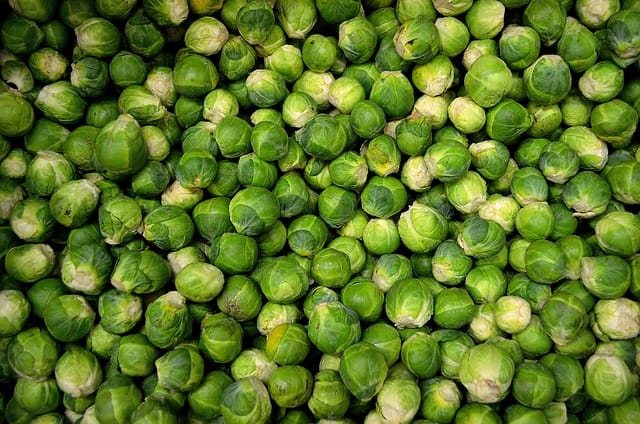How to grow Brussels Sprouts
Brussels sprouts are a nutritious and delicious vegetable that belong to the cabbage family

In this article:
- Introduction to Brussels Sprouts
- Choosing the Right Variety
- Site Selection and Soil Preparation
- Planting Brussels Sprouts
- Watering and Fertilizing
- Maintaining Weed Control
- Managing Pests and Diseases
- Pruning and Topping
- Harvesting Brussels Sprouts
- Storing and Preserving Brussels Sprouts
- Common Brussels Sprouts Problems and Solutions
- Frequently Asked Questions (FAQs)
- Conclusion
Introduction to Brussels Sprouts
Brussels sprouts are a nutritious and delicious vegetable that belong to the cabbage family. They are packed with vitamins, fiber, and antioxidants, making them a great addition to any garden and diet.
Choosing the Right Variety
When selecting a variety of Brussels sprouts to grow, consider factors such as maturity date, size of sprouts, and disease resistance. Some popular varieties include 'Long Island Improved', 'Diablo', and 'Jade Cross'.
Site Selection and Soil Preparation
Brussels sprouts thrive in cool weather, requiring full sun or partial shade. Choose a location with well-drained soil that is rich in organic matter. Prepare the soil by incorporating compost or well-rotted manure to improve fertility.
Planting Brussels Sprouts
Start Brussels sprouts seeds indoors 6-8 weeks before the last frost date or purchase young transplants from a nursery. Transplant the seedlings into the garden when they are 4-6 inches tall, spacing them 24-36 inches apart.
Watering and Fertilizing
Keep the soil consistently moist by providing 1-1.5 inches of water per week. Mulching can help retain moisture and suppress weed growth. Fertilize regularly with a balanced vegetable fertilizer to promote healthy growth.
Maintaining Weed Control
Regularly remove weeds around the Brussels sprouts plants to reduce competition for nutrients and water. Mulching with straw or wood chips can help keep weeds under control and maintain soil moisture.
Managing Pests and Diseases
Protect Brussels sprouts from common pests such as aphids, cabbage worms, and slugs by using organic insecticides or natural predators like ladybugs. Watch out for diseases like clubroot and powdery mildew, and treat early to prevent further damage.
Pruning and Topping
To encourage larger sprouts, consider pruning the lower leaves of the plant as it grows taller. This allows more energy to be focused on the development of the sprouts. You can also top the plant by removing the growing point to promote sprout formation.
Harvesting Brussels Sprouts
Brussels sprouts can be harvested when the sprouts are about 1-2 inches in diameter, firm, and bright green. Start harvesting from the bottom of the plant upwards, cutting the sprouts with a sharp knife. Avoid delaying harvest too long as they can become bitter.
Storing and Preserving Brussels Sprouts
Store harvested Brussels sprouts in a perforated plastic bag in the refrigerator for up to 2 weeks. To preserve them for longer, blanch the sprouts for 3-4 minutes, cool, and freeze them in airtight containers.
Common Brussels Sprouts Problems and Solutions
Some common problems with Brussels sprouts include yellowing leaves, cabbage worms, and splitting sprouts. These issues can be addressed by maintaining proper watering, applying organic insecticides, and harvesting at the right time.
Frequently Asked Questions (FAQs)
Q: When is the best time to grow Brussels sprouts?
A: Brussels sprouts are cool-season vegetables and are best grown in spring or fall when temperatures are between 45-75°F.
Q: How do I prevent clubroot in Brussels sprouts?
A: Rotate your crops, ensure proper soil drainage, and avoid using brassica family plants in affected areas to prevent clubroot.
Conclusion
Growing Brussels sprouts can be a rewarding gardening experience. By following the right practices in selecting varieties, preparing the soil, providing proper care, and managing pests and diseases, you can enjoy a bountiful harvest of delicious Brussels sprouts.
